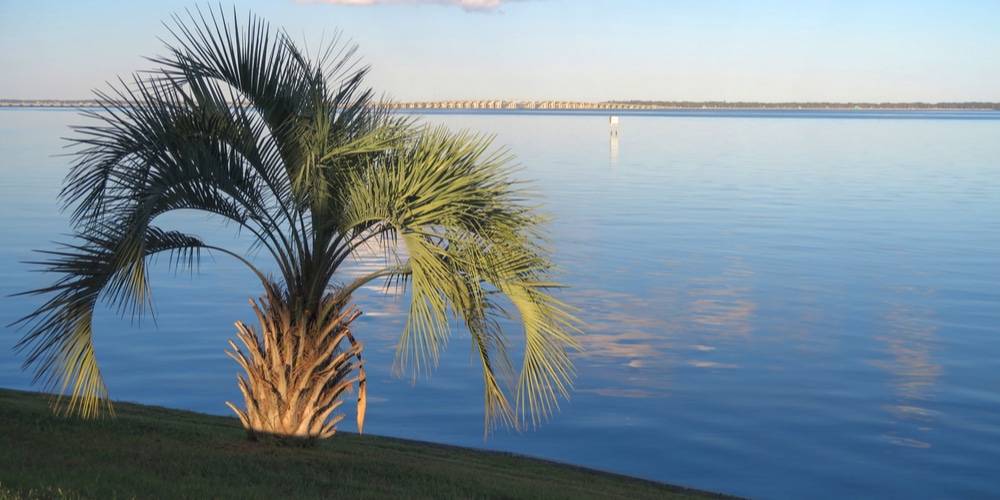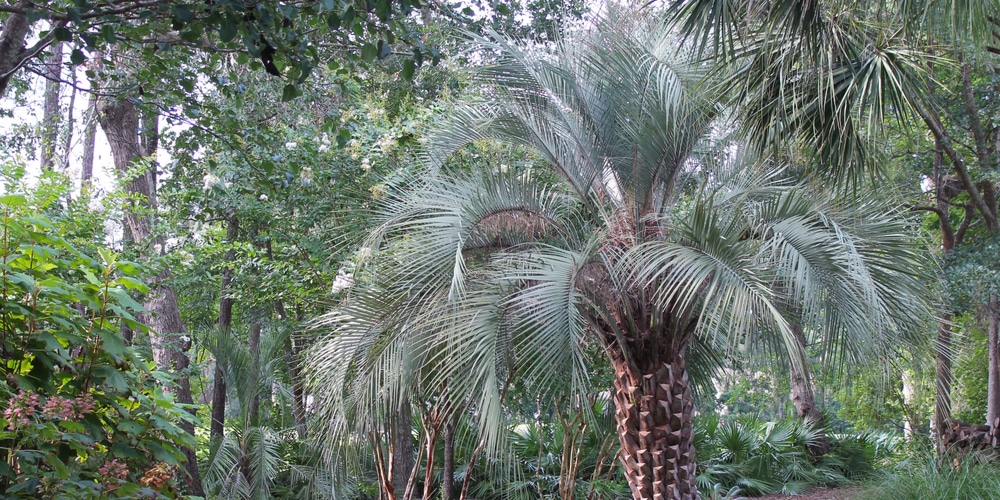The pindo palm is a beautiful and unique tree gaining in popularity over the past few years. People are drawn to its majestic appearance and fast growth rate. In this article, we will discuss the pindo palm growth rate in detail.
We will answer the questions: how fast do they grow, how tall they get, and how big is a full-grown pindo palm? Keep reading to learn more!
What Is A Pindo Palm, And Where Can You Find Them?
The pindo palm (Butia capitata), also known as the jelly palm, is a palm tree native to South America. It is characterized by its yellow or orange fruits, which are about the size of a grape and contain a large seed.
The fruits are often used to make jams, jellies, and wine. The pindo palm grows best in warm climates and can be found in Brazil, Uruguay, and Argentina. In the United States, it is sometimes grown as an ornamental plant in Florida and California.
The pindo palm is a hardy tree that can tolerate drought and salt spray. It is also resistant to many diseases and pests. However, it can be susceptible to cold damage if exposed to temperatures below freezing.
The Pindo palm can grow up to 20 feet tall and has blue-green leaves divided into long, thin strips. The trunk is covered in a brown fibrous material that peels off in thin layers.
The Pindo palm blooms with yellow flowers in the spring, followed by small, orange-yellow fruits that mature over the summer months. The fruit is often used to make jelly or wine. The Pindo palm is relatively low-maintenance and can be grown in USDA hardiness zones 8-11.
The Incredible Growth Rate Of The Pindo Palm
The Pindo palm (Jelly Palm) is a South American plant that grows in forested areas and is also known as the jelly palm because of its fruit, which is used to produce jelly.
It is not a fast-growing plant, only reaching 12 to 24 inches per year, but this slow growth rate is deceptive. The Pindo palm is one of the fastest-growing palms, taking only ten years to reach its full height of 10 to 15 feet. Its slender trunk is topped with a crown of feathery fronds, reaching up to 20 feet in length.
The Pindo palm is an adaptable plant that can tolerate a wide range of growing conditions, making it ideal for any garden. But despite its many positive attributes, the Pindo palm has one potential downside: it produces large amounts of fruit, which can be a nuisance if not harvested regularly. Still, this is a small price for such a beautiful and versatile plant.
How To Care For A Pindo Palm
The Pindo palm (Butia capitata) is a hardy, slow-growing tree that can add a touch of the tropics to any home. Native to South America, this striking palm is easy to care for and can tolerate a wide range of growing conditions. If you’re thinking of adding a Pindo palm to your indoor or outdoor space, here are a few things to consider.
When it comes to light, Pindo palms prefer bright, indirect sunlight. Keep your palm in a spot that gets plenty of light, but avoid placing it in direct sun, which can scorch the leaves.
Watering needs are moderate; aim to keep the soil evenly moist but not soggy. Allow the top inch or two of soil to dry out before watering again. During the winter months, reduce watering slightly, as the cooler temperatures can cause the roots to rot if they are too wet.
Pindo palms are not particularly fussy when it comes to soil, but they prefer well-drained soil rich in organic matter. If your native soil is not ideal, you can mix in some sand or Perlite to improve drainage.
Fertilizing needs are moderate; feed your palm once a month with a balanced fertilizer during the growing season and every other month during the winter.
Pindo palms are relatively low-maintenance plants, but they can be susceptible to pests and diseases. Watch for scale insects, mealybugs, and spider mites, which can all cause damage to the leaves.
If you notice any pests, treat them immediately with an appropriate pesticide. Diseases such as leaf spots and root rot can also be a problem, so it’s essential to watch for signs of trouble. If you catch a disease early, it will be easier to treat.
Pindo palm growth rate: Conclusion
With proper care, Pindo palms can live for many years. These majestic trees make a stunning addition to any indoor or outdoor space, and their easy-care nature makes them an excellent choice for busy gardeners.
So if you’re looking for a palm tree that is both beautiful and low-maintenance, the Pindo palm is the perfect plant for you.
Related Article: Are Palm Trees Native to California?

